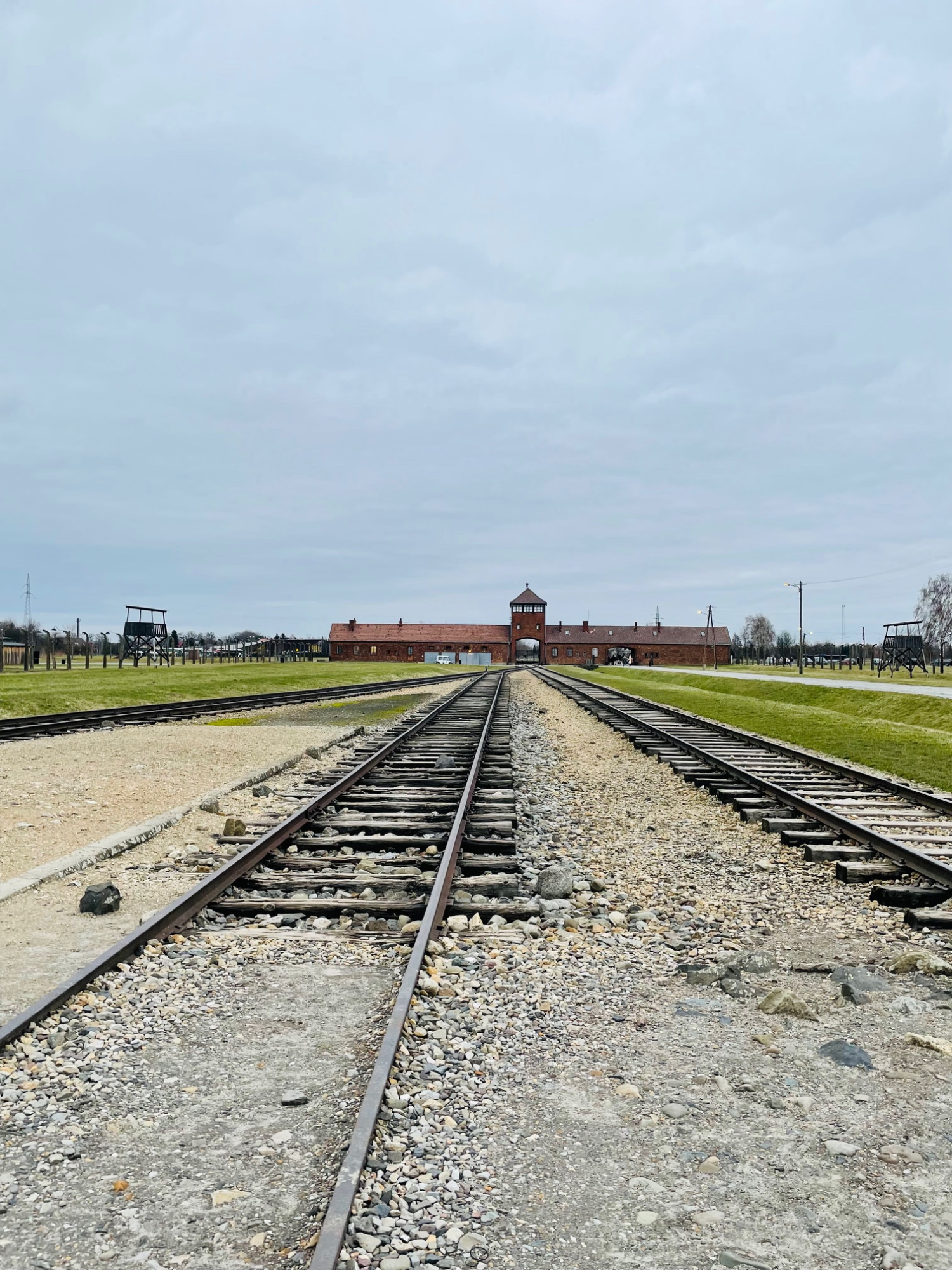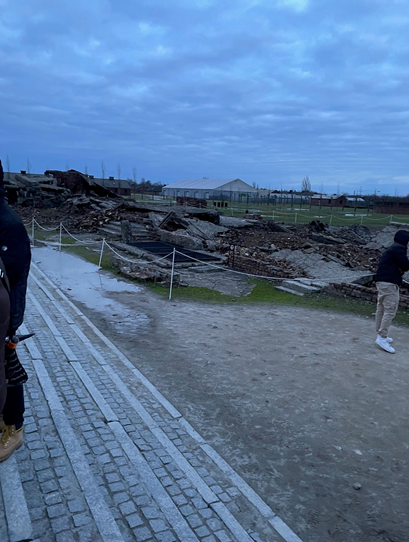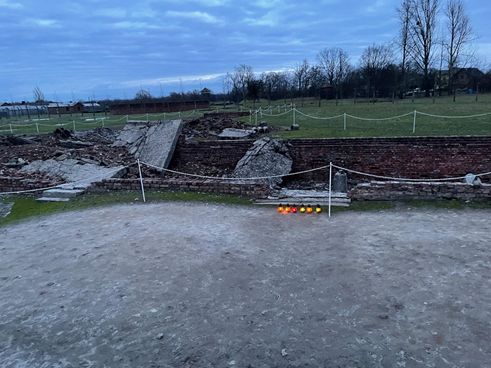Lessons from Auschwitz
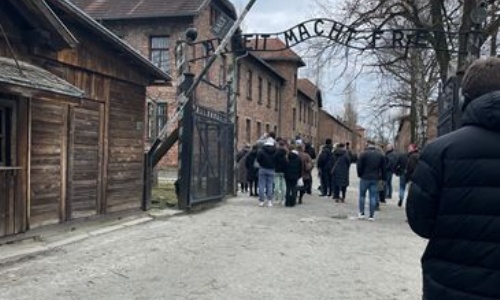
On 6th February Rowan (Yr13), Callum, Emerson and Teodor (Yr12) represented Hellesdon High School on a one day visit to Auschwitz as part of the Lessons from Auschwitz project. They have also attended seminars and heard from Holocaust survivors and will be sharing what they have learnt with the school community.
Thank you to Callum for writing this wonderful account of their visit.
Lessons from Auschwitz trip
On my trip to Poland with the Lessons from Auschwitz project, we spent the whole day learning about Jewish life Pre-WW2, what happened to the people who lived in Oświęcim, and the conditions and life of those who were sent to Auschwitz and Birkenau.
-The first place our group went to was the centre of Oświęcim to learn about the significance of the area. Before WW2, the centre was used as a marketplace and a place of community for everyone that lived there. Additionally, there are apartment blocks and flats which are where a lot of Jewish people lived until the Nazis arrived.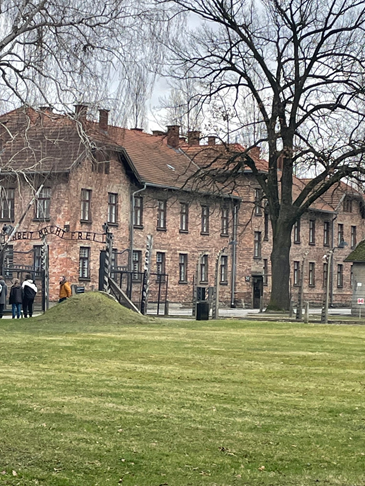
-When the Nazis arrived, they forced the Jewish people out of their homes, they were either forced to move or became homeless, but those people who were less fortunate were sent to Auschwitz or Birkenau.
- The second location we moved to was Auschwitz. The concentration camp was composed of Jewish people -which were the main target- , Poles, Romani, and Soviet prisoners of war. The whole area was very eerie and quiet, and makes you realise that innocent people had been sent to a place with such poor conditions.
- Walking towards the gate in the images below we were able to see one of the blocks where some Jewish people worked, and opposite was a building where the people slept on poor beds with straw which had been wet and withered.
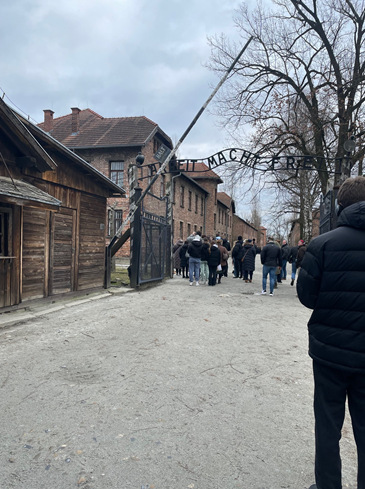 -We walked around all the blocks and learnt the history of what happened in the camp. There is one story which we learned in our booklets about a man named Jerzy Bielecki.
-We walked around all the blocks and learnt the history of what happened in the camp. There is one story which we learned in our booklets about a man named Jerzy Bielecki.
-Bielecki was on one of the very first transports to Auschwitz out of 728 Polish prisoners from the prison at Tarnow on 14th June 1940. Jerzy had been arrested because the Nazis had suspected him of helping the Polish resistance. Jerzy was a Polish Catholic, as were most prisoners sent to the camp in the first year and a half of its existence. Jerzy described his arrival at Auschwitz in an interview with Laurence Rees.
- “They beat us between the cars and the gate. They gave us such a hard time. There was a young boy standing next to me, maybe he was sixteen, fifteen even, and he was crying, tears were falling (...) We were afraid, we didn’t know where we were. It seemed to me that we found ourselves in hell. You cannot describe it any other way. And it turned out it was hell.”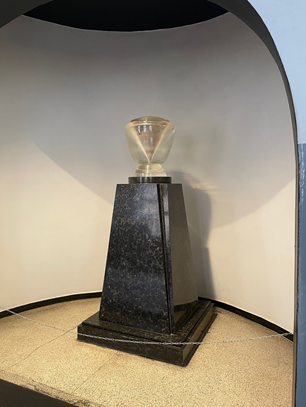
- There were numerous items in the Blocks that are displayed that have an incredible significance and others you were not able to take photos of. In a hallway of one of the blocks, there were pictures of numerous individuals who died inside the camp, and in one of the rooms had an urn with the ashes of dead people inside, which was very morbid and saddening.
- The last room that we went to was the gas chamber. But outside of it was a hanging post and further across a gate there was a house. The commander of Auschwitz was Rudolf Hoess, who lived in the house with his family. He was hanged for his crimes in the square of Auschwitz. Inside the gas chamber there were scratch marks all along the grey walls, and a crematorium located adjacent to the chamber.
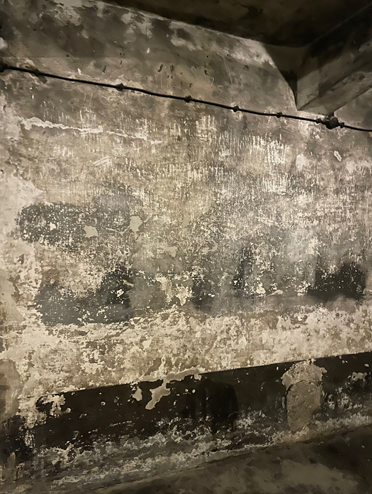
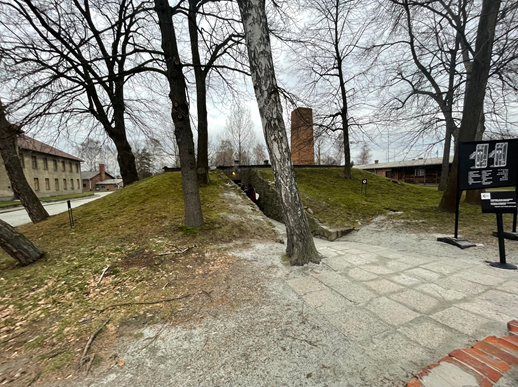
-The last location that we went to was the Birkenau death camp, seeing the building in which the prisoners slept in similar to those in the concentration camp, and the remains of the destroyed Barracks.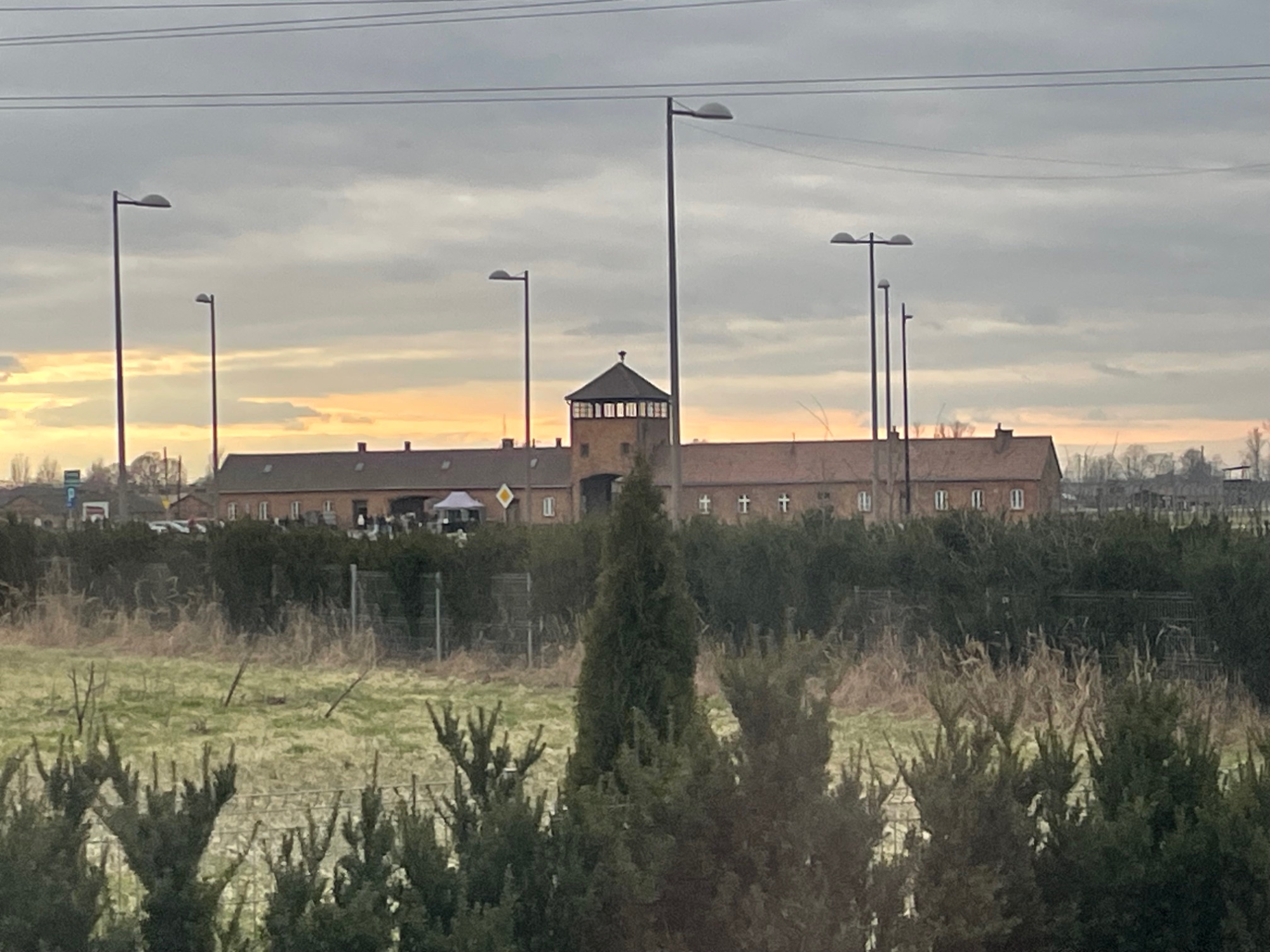
- We walked down the train tracks to one of the train carts, learning how they were able to get a majority of the people they were targeting into Birkenau within a couple months by using several train carts and filling them up with people.
- The last place in Birkenau we walked to was a destroyed gas chamber, Heimrich Himmler ordered the destruction of the gas chamber in 1942. We ended the day with a ceremony where we held candles and listened to the Rabbi say a prayer, however we were unable to light the candles due to the wind.
